2010 Shopper Survey (Transportation Alternatives) This study serves as an example of how to make the economic case for active transportation. Transportation Alternatives served as a consultant on this 2010 survey of the East Village in Manhattan which showed that non-drivers spent nearly twice as much as drivers in local businesses.
This study serves as an example of how to make the economic case for active transportation. Transportation Alternatives served as a consultant on this 2010 survey of the East Village in Manhattan which showed that non-drivers spent nearly twice as much as drivers in local businesses.
2010 Shoppers Study (PDF)
Active Transportation Beyond Urban Centers (Rails-to-Trails Conservancy)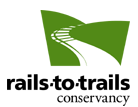 This 2012 report from the Rails-to-Trails Conservancy — Active Transportation Beyond Urban Centers: Walking and Bicycling in Small Towns and Rural America — highlights that, contrary to common belief, bicycling and walking rates in rural regions are comparable to those in urban areas; that federal investment in active transportation in rural areas is significant; and this investment pays large dividends for local communities and economies.
This 2012 report from the Rails-to-Trails Conservancy — Active Transportation Beyond Urban Centers: Walking and Bicycling in Small Towns and Rural America — highlights that, contrary to common belief, bicycling and walking rates in rural regions are comparable to those in urban areas; that federal investment in active transportation in rural areas is significant; and this investment pays large dividends for local communities and economies.
Beyond Urban Centers: Walking and Bicycling in Small Towns and Rural America (PDF)
Benefit-Cost Analysis of Bicycle Facilities (Active Communities / Transportation Research Group) From the Active Communities / Transportation Research Group: "How much do bicycle facilities cost? Can we quantify their benefits? In what cases do estimates of benefits outweigh costs? If your community is considering building a new bicycle facility, you can use this tool to estimate costs, the demand in terms of new cyclists, and measured economic benefits (e.g., time savings, increased livability, decreased health costs, a more enjoyable ride)."
From the Active Communities / Transportation Research Group: "How much do bicycle facilities cost? Can we quantify their benefits? In what cases do estimates of benefits outweigh costs? If your community is considering building a new bicycle facility, you can use this tool to estimate costs, the demand in terms of new cyclists, and measured economic benefits (e.g., time savings, increased livability, decreased health costs, a more enjoyable ride)."
Benefit-Cost Analysis of Bicycle Facilities (URL)
Benefits of Rail Trails (RTC) Rails to Trails Conservancy's Benefits of Rail Trails include Health, Transportation/Livability, Conservation/Environment, Economy/Revitalization, and Historic Preservation/Community Identity.
Rails to Trails Conservancy's Benefits of Rail Trails include Health, Transportation/Livability, Conservation/Environment, Economy/Revitalization, and Historic Preservation/Community Identity.
Benefits of Rail Trails (URL)
Bicyclists Pay More than Their Fair Share (Texas Bicycle Coalition)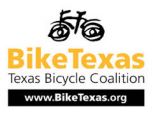 This hotly-debated topic is a favorite of folks who would love to see the streets free of bicycles. Check out Texas Bicycle Coalition's resource sheet debunking this myth.
This hotly-debated topic is a favorite of folks who would love to see the streets free of bicycles. Check out Texas Bicycle Coalition's resource sheet debunking this myth.
Bicyclists Pay More than Their Fair Share (PDF) (84KB)
Bicyclists Pay Their Way (St. Louis Regional Bicycle Federation) This hotly-debated topic is a favorite of folks who would love to see the streets free of bicycles. St. Louis Regional Bicycle Federation steps up to the plate to debunk this myth. Bicyclists Pay Their Way, Oh Yeah! (Cyclists Pay Their Fair Share) By Dr. Brent Hugh; 2 pages.
This hotly-debated topic is a favorite of folks who would love to see the streets free of bicycles. St. Louis Regional Bicycle Federation steps up to the plate to debunk this myth. Bicyclists Pay Their Way, Oh Yeah! (Cyclists Pay Their Fair Share) By Dr. Brent Hugh; 2 pages.
Bicyclists Pay Their Way (DOC) (27KB)
Bicyclists, Drivers, and Taxes (AlaBike) This hotly-debated topic is a favorite of folks who would love to see the streets free of bicycles. See the Alabama Bicycle Coalition's rebuttal/Op-Ed to the myth that bicyclists don't pay their fair share.
This hotly-debated topic is a favorite of folks who would love to see the streets free of bicycles. See the Alabama Bicycle Coalition's rebuttal/Op-Ed to the myth that bicyclists don't pay their fair share.
Bicyclists, Drivers, and Taxes (DOC) (24KB)
Do Roads Pay for Themselves: Setting the Record Straight on Transportation Funding (US PIRG)
 This January 2011 report from the U.S. Public Interest Research Group debunks a significant transportation myth: "Highway advocates often claim that roads 'pay for themselves,' with gasoline taxes and other charges to motorists covering – or nearly covering – the full cost of highway construction and maintenance. They are wrong." This study explains that "highways do not – and, except for brief periods in our nation's history, never have – paid for themselves through the taxes that highway advocates label 'user fees.'"
This January 2011 report from the U.S. Public Interest Research Group debunks a significant transportation myth: "Highway advocates often claim that roads 'pay for themselves,' with gasoline taxes and other charges to motorists covering – or nearly covering – the full cost of highway construction and maintenance. They are wrong." This study explains that "highways do not – and, except for brief periods in our nation's history, never have – paid for themselves through the taxes that highway advocates label 'user fees.'"
Do Roads Pay for Themselves (PDF) (1.1MB)
Driven to Excess: Parking Cost Study (Transportation Alternatives) This 2008 report from Transportation Alternatives (TA) discusses the effect of low pricing for parking and its connection to air pollution, illegal parking and traffic congestion, all of which exact high costs on New York City's environment, economy, health and quality of life.
This 2008 report from Transportation Alternatives (TA) discusses the effect of low pricing for parking and its connection to air pollution, illegal parking and traffic congestion, all of which exact high costs on New York City's environment, economy, health and quality of life.
Driven to Excess: Parking Cost Study (PDF)(3.7MB)
Economic & Social Benefits of Off-Road Bicycle & Pedestrian Facilities (IMBA) NBPC Technical Brief, National Bicycle and Pedestrian Clearinghouse Technical Assistance Series, Number 2, September 1995.
NBPC Technical Brief, National Bicycle and Pedestrian Clearinghouse Technical Assistance Series, Number 2, September 1995.
Economic & Social Benefits of Off-Road Bicycle & Pedestrian Facilities (PDF)(34KB)
Economic Benefit of Trails (American Hiking Society) This fact sheet from the American Hiking Society (AHS) gives an overview of the economic benefit of trails.
This fact sheet from the American Hiking Society (AHS) gives an overview of the economic benefit of trails.
Economic Benefit of Trails (AHS) (PDF) (163KB)
Economic Benefits of A Walkable Community (University of Wisconsin) This 2003 article from the Center For Community Economic Development at the University of Wisconsin outlines the economic benefits of walkable communities.
This 2003 article from the Center For Community Economic Development at the University of Wisconsin outlines the economic benefits of walkable communities.
Economic Benefits of a Walkable Community (PDF)
Economic Consequences of Obesity (CDC)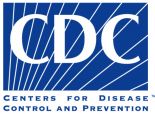 This Center for Disease Control & Prevention website gives the national estimated cost of obesity and state-level estimated costs of obesity. (URL)
This Center for Disease Control & Prevention website gives the national estimated cost of obesity and state-level estimated costs of obesity. (URL)
CDC - Economics of Obesity
Economic Impact Analysis of Transportation Investments (AASHTO)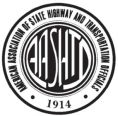 Put together by the American Association of State Highways and Transportation Officials (AASHTO), this study discusses the role that the Recovery Act has played in expanding and improving Transportation Enhancements. The study also confirms that more than 17 million jobs were created by TE projects.
Put together by the American Association of State Highways and Transportation Officials (AASHTO), this study discusses the role that the Recovery Act has played in expanding and improving Transportation Enhancements. The study also confirms that more than 17 million jobs were created by TE projects.
Economic Impact Analysis of Transportation Investments (PDF)
Economic Value of Walkability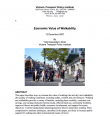 This study was published in 2004 by Todd Litman of the Victoria Transport Policy Institute. The paper identifies various categories of economic benefits for walking, most of which equally apply to bicycling.
This study was published in 2004 by Todd Litman of the Victoria Transport Policy Institute. The paper identifies various categories of economic benefits for walking, most of which equally apply to bicycling.
Economic Value of Walkability; 22 pages (PDF) (148KB)
Effects of Fossil-Fuel Subsidy Reform This 2010 paper from the International Institute for Sustainable Development summarizes modeling studies that analyzed economic and environmental impacts of fuel subsidies. It describes research needs but concludes that there is sufficient evidence to demonstrate significant environmental and economic benefits of phasing out fossil-fuel subsidies.
This 2010 paper from the International Institute for Sustainable Development summarizes modeling studies that analyzed economic and environmental impacts of fuel subsidies. It describes research needs but concludes that there is sufficient evidence to demonstrate significant environmental and economic benefits of phasing out fossil-fuel subsidies.
Effects of Fossil-Fuel Subsidy Reform (PDF)
Estimating the Economic Benefits of Bicycling & Bicycle Facilities
This article from 2007 by Kevin J. Krizek examines the ways to measure economic benefits of bicycling and bicycling facilities .
Economic Benefits of Bicycling & Bicycle Facilities (PDF) (116KB)
Good Walking is Good Business (WalkBoston) This 2011 report from WalkBoston details why an investment in walking is a good business investment. According to the authors: "Across the U.S., properties in mixed-use, walkable districts now tend to have higher and more stable values than those in less walkable areas."
This 2011 report from WalkBoston details why an investment in walking is a good business investment. According to the authors: "Across the U.S., properties in mixed-use, walkable districts now tend to have higher and more stable values than those in less walkable areas."
"Good Walking is Good Business (WalkBoston)
Measuring Transportation Investments: The Road to Results (Pew Center, Rockefeller Foundation) This May 2011 report from the Pew Center on the States and the Rockefeller Foundation found that many states don't have the information they need to accurately evaluate and report on the performance of their transportation investments in the areas of safety, jobs and commerce, mobility, access, environmental stewardship and infrastructure preservation.
This May 2011 report from the Pew Center on the States and the Rockefeller Foundation found that many states don't have the information they need to accurately evaluate and report on the performance of their transportation investments in the areas of safety, jobs and commerce, mobility, access, environmental stewardship and infrastructure preservation.
Measuring Transportation Investments- The Road to Results (PDF)
New York City's Congestion Pricing Experience and Implications for Road Pricing Acceptance in the US
This paper by Bruce Schaller analyzes how the 2007 congestion pricing proposal gained widespread public support but was ultimately blocked in the state legislature. It assesses the implications of New York City's experience for pursuing congestion pricing and mileage-based taxes in the U.S.
New York City's Congestion Pricing Experience (PDF)
Paved With Gold: The Real Value of Good Street Design This 2007 report from London's Commission for Architecture & the Built Environment investigates the value of design. These values include direct tangible benefits such as economic value and indirect long-term benefits, including public health and reduced crime.
This 2007 report from London's Commission for Architecture & the Built Environment investigates the value of design. These values include direct tangible benefits such as economic value and indirect long-term benefits, including public health and reduced crime.
Paved With Gold: The Real Value of Good Street Design (PDF) (848KB)
Ranking States' Gasoline Price Vulnerability (Natural Resources Defense Council) This report updates the Natural Resources Defense Council's (NRDC) 2007, 2008, 2009, and 2010 research identifying the states whose citizens feel the greatest economic pain from gasoline prices — and those states that are doing the most to break their addiction to oil. 26 pages.
This report updates the Natural Resources Defense Council's (NRDC) 2007, 2008, 2009, and 2010 research identifying the states whose citizens feel the greatest economic pain from gasoline prices — and those states that are doing the most to break their addiction to oil. 26 pages.
Ranking States' Gasoline Price Vulnerability and Solutions for Change (PDF)
Reducing Foreclosures and Environmental Impacts through Location-Efficient Neighborhood Design This 2009 report from the Natural Resources Defense Council presents new research about the direct link between "location efficiency"—a measure of the transportation costs in a given area—and mortgage foreclosure rates. The study shows that factors such as neighborhood compactness, access to public transit, and rates of vehicle ownership are key to predicting mortgage performance.
This 2009 report from the Natural Resources Defense Council presents new research about the direct link between "location efficiency"—a measure of the transportation costs in a given area—and mortgage foreclosure rates. The study shows that factors such as neighborhood compactness, access to public transit, and rates of vehicle ownership are key to predicting mortgage performance.
Reducing Foreclosures and Environmental Impacts through Location-Efficient Neighborhood Design Report (PDF) (2.2 MB)
Social & Economic Benefits of Transportation Enhancements This 2005 document from the National Transportation Enhancements Clearinghouse shows ten case studies of Transportation Enhancement projects and the benefits they provided to communities.
This 2005 document from the National Transportation Enhancements Clearinghouse shows ten case studies of Transportation Enhancement projects and the benefits they provided to communities.
Social & Economic Benefits of Transportation Enhancements (PDF)(680KB)
The Costs of Driving Brochure
 This brochure produced by the Santa Cruz Regional Transportation Commission's Commute Solutions helps people calculate the true costs of driving; 2 pages.
This brochure produced by the Santa Cruz Regional Transportation Commission's Commute Solutions helps people calculate the true costs of driving; 2 pages.
The Costs of Driving Brochure (PDF) (143KB)
The Economic Benefits of Open Space, Recreation Facilities and Walkable Community Design In this 2010 report, Active Living Research outlines how providing children and families with opportunities for physical activity, local parks and recreation areas can provide residents and local governments with economic benefits such as higher property values and increases to tax revenue.
In this 2010 report, Active Living Research outlines how providing children and families with opportunities for physical activity, local parks and recreation areas can provide residents and local governments with economic benefits such as higher property values and increases to tax revenue.
The Economic Benefits of Open Space, Recreation Facilities and Walkable Community Design (PDF) (331KB)
The Economic Case for Carfree Development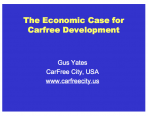 This presentation is by Gus Yates from Carfree City, USA.
This presentation is by Gus Yates from Carfree City, USA.
The Economic Case for Carfree Development (PDF) (599KB)
The Economic Value of Active Transportation (Ryan Snyder Associates)
This fact sheet from 2011 was assembled to illustrate that active transportation makes economic sense for developers, businesses, cities and residents. Data is organized into several categories: Economic Value of Livable Communities; Economic Value of Walking and Bicycling; Economic Value of Trails; and Costs of Not Designing Livable Communities.
The Economic Value of Active Transportation (PDF)(172KB)
The Economics of Outdoor Recreation, Conservation & Historic Preservation (Southwick Associates) This 2011 report by Southwick Associates outlines the economic benefits of outdoor recreation, natural resource conservation and historic preservation. The information in the report comes from academic and trade journals, websites and a variety of other publications related to the topic.
This 2011 report by Southwick Associates outlines the economic benefits of outdoor recreation, natural resource conservation and historic preservation. The information in the report comes from academic and trade journals, websites and a variety of other publications related to the topic.
The Economic Value of Outdoor Recreation (Southwick Associates) (PDF)
Top 10 Bicycling Myths (Prescott Alternative Transportation)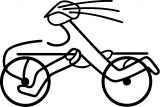 The Top 10 Bicycling Myths from Prescott Alternative Transportation include such misconceptions as: Bicyclists are a "special interest group", Bicycles are illegal in the roadway, and only people who buy gasoline pay the taxes that build roads...cyclists do not. Read the other top 10 myths and PAT's responses to them here.
The Top 10 Bicycling Myths from Prescott Alternative Transportation include such misconceptions as: Bicyclists are a "special interest group", Bicycles are illegal in the roadway, and only people who buy gasoline pay the taxes that build roads...cyclists do not. Read the other top 10 myths and PAT's responses to them here.
Top 10 Bicycling Myths (DOC) (61KB)
Trails and Tourism: The Missing Link
This article, written by Bernard Lane in 1999, explores the ups and downs of partnering with the tourism industry. A European perspective is applied throughout with a focus on trail development, types of trails, design skills, market assessment, marketing, product development, partnership approaches, and issues for the future.
Trails and Tourism: The Missing Link (URL)
Transportation Cost Literature Review
This 2005 paper by Todd Litman of the Victoria Transport Policy Institute gives an overview of articles and studies related to transportation costs.
Transportation Cost Literature Review (PDF) (107KB)

